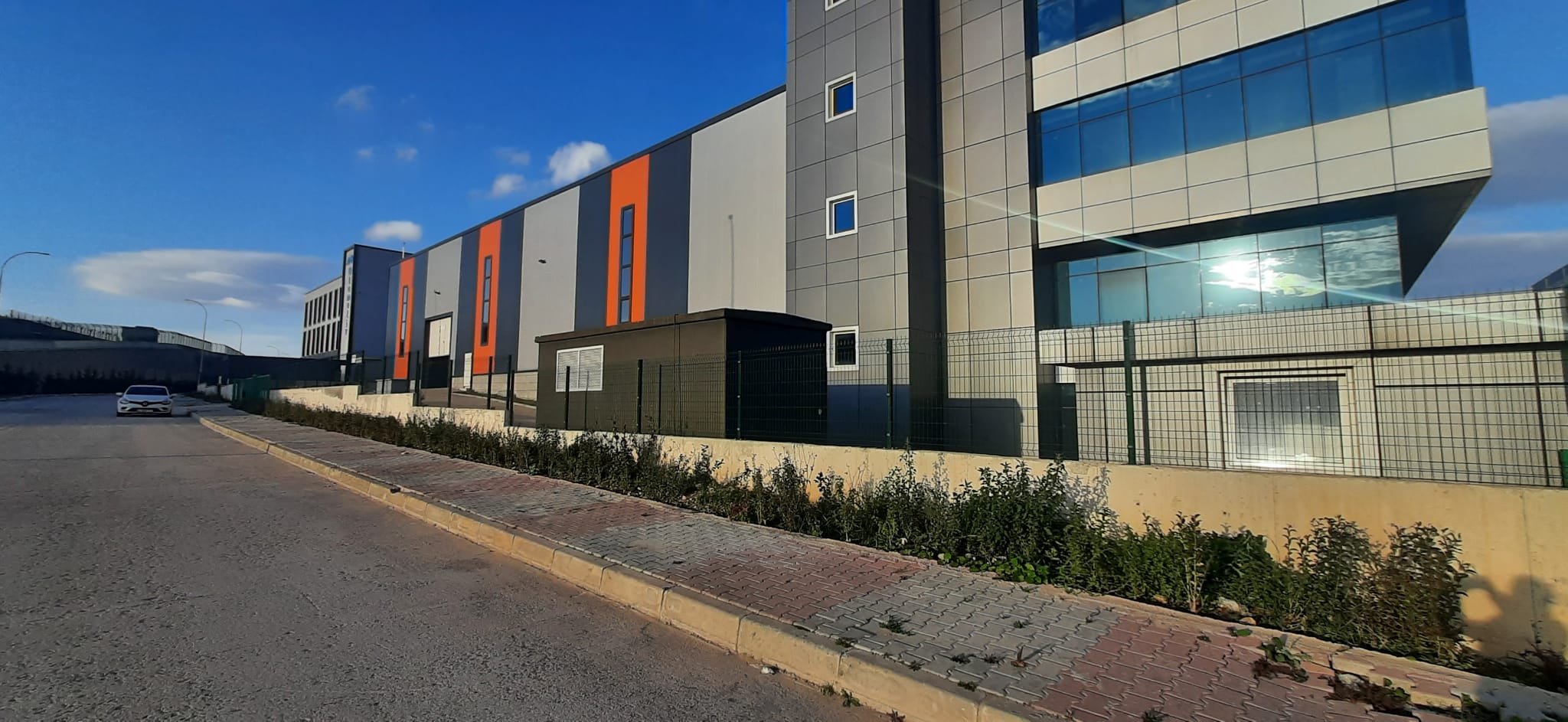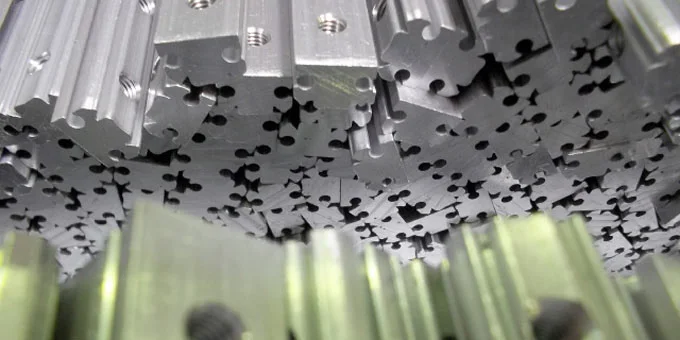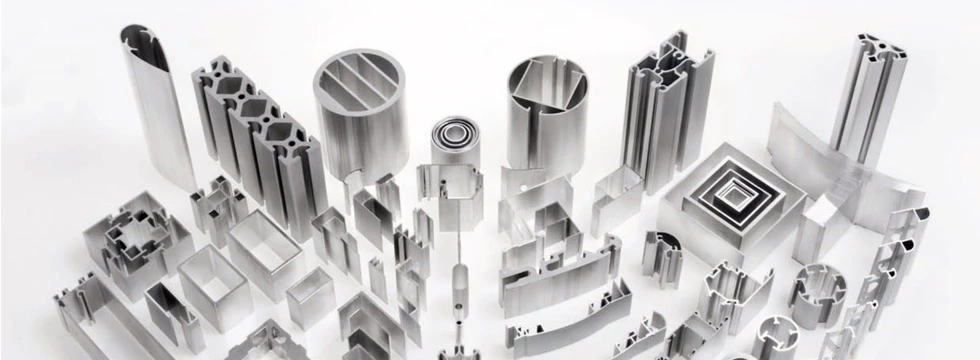Aluminum is not only characterized by its very low weight, but also, among other things, by its resistance, stability and good conductivity. So it is hardly surprising that aluminum has made its triumphant advance in our everyday lives and is omnipresent here almost everywhere.
This special material is often not recognizable at first sight, especially when it comes to aluminium components that fit harmoniously into the overall picture. Such components are, for instance, aluminium profiles. They are used in various areas: for example in mechanical engineering, furniture construction, construction technology or in the solar industry.
Mostly, aluminium profiles are used rather nondescriptly and inconspiciously in order to blend in harmoniously with the bigger picture. Here, in turn, they fulfill an important function as a component. They hold together what belongs together and furthermore make it possible to construct the most complex machines. Thus, they make an important contribution to the development and implementation of innovative solutions.
Particularly in the last-mentioned context, mostly aluminium profiles that have been developed according to the customer’s requirements are used instead of standard profiles.
Here a partner is needed who can refer to a long experience in the field of profile and extrusion technology – like Alusen.
The way to an individual aluminium profile
Creating an individually planned aluminium profile is usually not exclusively about performing milling work. Aluminium is a material that can be processed in a variety of ways, which is why many different processing steps are possible.
Aluminium profiles can be sawn in order to achieve the required lengths, as well as they can be provided with drill-holes to adapt them exactly to the intended application. Furthermore, there is the possibility of applying various surface treatments – from painting and foiling to powder coating to anodizing, grinding and polishing.
Drilling aluminium
Drilling makes it possible to provide aluminium with precise indentations. A drill-hole is usually characterized by a round shape and can either deepen the processed material at a single spot or even break through it. To plan a drilling, at least information has to be available about how deep the deepening should be and what diameter it should have. In this way, the holes can be precisely adapted to what they are intended for. If you compare drilling and milling, you will notice that milling is usually more complex in its processing. However, drilling aluminium can be an important work step in the production of individually planned aluminium profiles, while various drilling tools make it possible, to make the intended specifications.
When could drilling be required?
Drilling in aluminium profiles is often already necesssary when it comes to relatively simple components. For example with protruding profiles which are intended to protect individual stair steps or other objects and which must offer a fixture to attach them. Compensation and adaption profiles, which are required for example when laying floors, lead to a similar situation. They help to create a height adjustment and thus eliminate tripping hazards. Transition profiles also often need drill-holes.
When it comes to floor laying, they do not primarily serve to compensate height but to conceal unsightly transitions like they can appear when laying carpets. The deepening that completely passes through the material here, can be used to screw the profile. If visible screw connections and drill-holes are to be avoided, gluing a profile is an option during assembly as well. Projection, transition and compensation profiles are relatively simple components that are often manufactured of aluminium for optical reasons. Of course, drilling aluminium is also important when it comes to designing highly complex profiles.
Refining aluminium profiles
The mechanical processing of aluminum profiles is an essential step towards the desired end product. However, drill-holes, millings and other specifications per se often do not lead to a profile that is capable of mastering all challenges. Profiles, such as those mentioned above, which are used on floors, are a good and simple example here.
Looking at an isosceles angle, both legs that form the angle have exactly the same length. In case of unequal angles, one leg is longer than the other. This case is also called an L-profile. Both cases – the isosceles and unequal-sided – have their specific areas of application. Further specifications of an angle profile can be made, for example, by varying the thickness of the legs or by adapting the design of the angle vertex to the intended area of use.
Angle properties and design of the angle legs
The most common angle profiles have a 90-degree angle and can therefore be used, for example, to frame or connect two components that are at right angles to one another. Right-angled profiles are not the only angle profiles that are important in industry. Sometimes acute-angled profiles are required to perform specific tasks. The design of the legs can vary as well.
Looking at an isosceles angle, both legs that form the angle have exactly the same length. In case of unequal angles, one leg is longer than the other. This case is also called an L-profile. Both cases – the isosceles and unequal-sided – have their specific areas of application. Further specifications of an angle profile can be made, for example, by varying the thickness of the legs or by adapting the design of the angle vertex to the intended area of use.
Angle profiles made of aluminium
Basically, angle profiles can be made of a wide variety of materials. However, due to its special material properties, aluminum plays an outstanding role here. Aluminum does not only convince by its low weight, it is also strong at the same time, but it can also be easily adapted and processed. Precise cuts, drilling and many other mechanical processes are thus possible. Angle profiles made of aluminum, which are still visible after their installation, are also visually attractive and can therefore significantly increase the end product’s value. In the production of angle profiles Aluminum is not only used in several mechanical processes, but also in various surface finishes. This ensures that the angle profiles produced are always ideally adapted to their area of application. In addition to profiles that are produced in the shape of an angle, there are numerous other profile shapes. A comparable simple profile shape is similar to the capital letter “T”. While the longer element of such a profile can be used, for example, to close the cavity between two other components, the horizontal element in this case rests flat on the components of the same height. In this way, for instance, a useful cover can be achieved by using a T-profile, which can be fixed in various ways.

Alusen has been dedicated to aluminum profile technology for more than 15 years and has thus become an experienced and reliable partner for industry. At the same time, the company always keeps a firm eye on the future and has recognized that aluminum profiles have also become indispensable in new, innovative industrial sectors.
Contact

Alusen
Alusen Alüminyum Profil San. ve Dış Tic. A.Ş.
Çerkeşli OSB Mahallesi
İMES-23. Cad. No: 14
TR 41455 Dilovası / KOCAELİ
Türkiye
Tel.: +90 262 658 23 32
Fax: +90 262 658 23 34
E-Mail: mail@alusen.com





